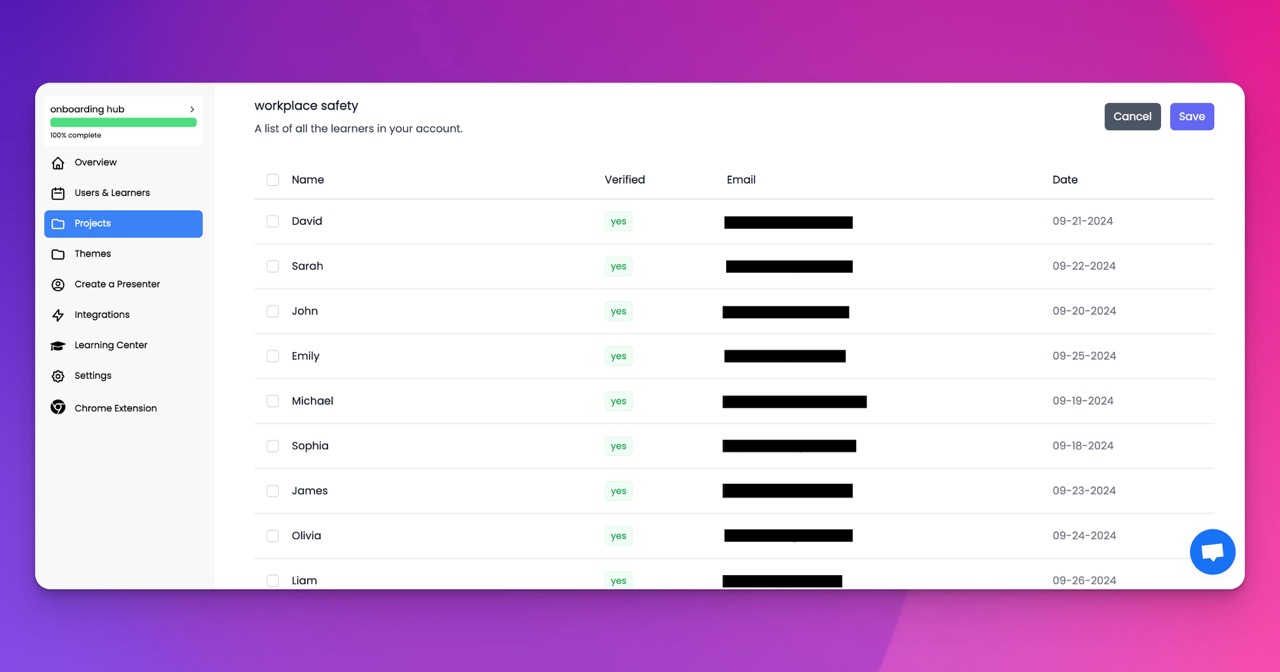🎉 Trainday now integrates with Zendesk and Hubspot 🎉 Trainday now integrates with Zendesk and Hubspot 🎉 Trainday now integrates with Zendesk and Hubspot
🎉 Trainday now integrates with Zendesk and Hubspot
🎉 Trainday now integrates with Zendesk and Hubspot
Contact
Safeguarding Sanitation: The Role of Data in Enhancing Waste Management Training Programs
In the critical and often hazardous field of waste management, safeguarding workers through effective training is paramount. "Safeguarding Sanitation" delves into how data plays a transformative role in enhancing training programs within the waste management industry. By analyzing accident data, operational metrics, and compliance reports, waste management companies can tailor their training programs to specifically address the unique risks their workers face. This blog post explores the comprehensive benefits of integrating data into training initiatives, demonstrating how a data-driven approach can lead to more informed, safe, and efficient waste management practices.
Data-Driven Insights for Targeted Training
Utilizing data effectively is key to identifying specific training needs and enhancing the overall safety of waste management operations.
Analyzing Incident and Accident Reports
Regular analysis of incident and accident reports allows organizations to identify patterns and trends in safety breaches or failures. This critical evaluation helps pinpoint areas where training is lacking or where new risks may have emerged, enabling the development of targeted training modules to address these specific issues.
Feedback from On-the-Ground Employees
Incorporating feedback from workers provides invaluable insights that can significantly influence training content. Employees at the frontline of operations often provide real-time data and perspectives that might not be captured through formal reporting channels, highlighting practical challenges and training gaps.
Crafting Precise Training Modules
With insights drawn from thorough data analysis, training programs can be specifically designed to address the identified needs, enhancing their relevance and effectiveness.
Scenario-Based Safety Drills
Developing training scenarios that reflect actual situations encountered by waste management teams can significantly enhance the practical application of safety knowledge. These drills allow workers to practice their response to hazardous situations in a controlled environment, reinforcing safety protocols and procedures.
Specialized Skills Training
Data often reveals specific operational areas that pose higher risks, necessitating focused skills training. For instance, if data shows a high incidence of injuries related to machinery use, specialized training can be implemented to enhance machine handling and maintenance skills.
Continuous Training Enhancement
A dynamic approach to training, supported by ongoing data collection and analysis, ensures that safety programs evolve in line with operational changes and emerging risks.
Regular Updates Based on Latest Data
Training programs must be regularly updated to reflect the latest safety standards, technological advancements, and operational practices. As new data becomes available, it should be used to refresh training materials and methods, ensuring they remain effective and relevant.
Proactive Risk Management
Analyzing trends and predictive data allows organizations to anticipate potential future risks, integrating preventive measures into training programs before new types of accidents or incidents occur. This proactive approach not only prevents accidents but also prepares teams to handle unexpected situations safely.
Enhancing Compliance and Reducing Liability
Adopting a data-driven approach in training programs helps ensure compliance with regulatory requirements and reduces potential liabilities associated with safety failures.
Strengthening Regulatory Compliance
Data-driven training ensures that all safety procedures align with current regulations and industry standards, minimizing the risk of non-compliance penalties and enhancing the organization's reputation for safety.
Improved Documentation for Audits
Maintaining comprehensive records of training sessions, updates, and employee participation, facilitated by data management systems, supports transparency and accountability. These records are crucial during safety audits and compliance checks, providing proof of the organization's commitment to continuous safety improvement.
Conclusion
"Safeguarding Sanitation: The Role of Data in Enhancing Waste Management Training Programs" illustrates the crucial role of data in developing effective, responsive, and comprehensive safety training within the waste management industry. By leveraging detailed data analytics, organizations can ensure that their training programs are not only compliant with safety standards but also tailored to the specific risks and challenges of waste management operations. This approach not only protects workers but also boosts operational efficiency and safety compliance, reinforcing a culture of safety across all levels of the organization.
Accelerate Compliance.
Deliver OSHA-Ready Courses Instantly.
Empower your team with data-driven training solutions tailored to your industry's safety standards. Stay compliant, reduce risks, and boost productivity with AI-powered course creation.
